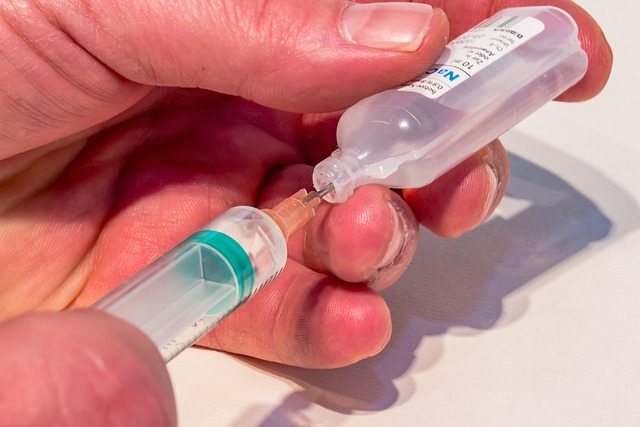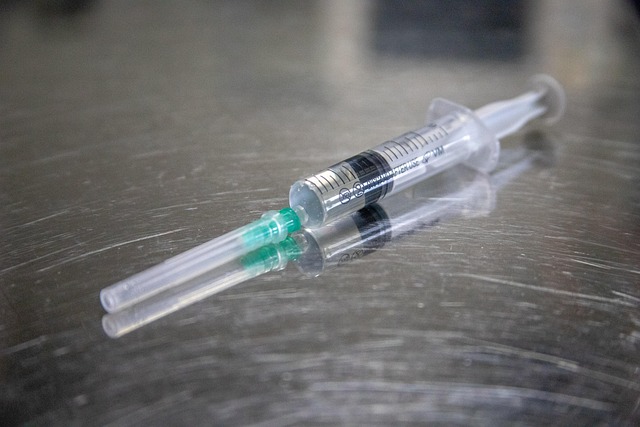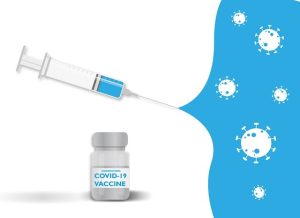Botox injections for facial contouring have become a popular non-surgical treatment, offering temporary muscle relaxation to reduce wrinkles and improve facial aesthetics. The process involves a consultation, numbing, and precise needle injections by qualified professionals. While effective for smoothing lines and defining features, Botox requires regular maintenance and carries potential risks like redness, swelling, and muscle weakness. Choosing an established clinic with experienced practitioners and high-quality products is crucial for safe and desired results. Post-treatment care, including hydration and following provider recommendations, optimizes outcomes and mitigates side effects. Expectations should align with the subtlety of Botox's muscle relaxation, requiring regular injections to maintain results.
Botox injections have emerged as a popular, non-surgical option for facial contouring and rejuvenation. This article delves into the world of Botox treatments, exploring their effectiveness in reshaping facial features and erasing signs of aging. From understanding the science behind Botox to navigating the procedure step-by-step, this guide covers everything you need to know about Botox injections. Discover the benefits, potential risks, and realistic expectations, empowering you to make an informed decision for your cosmetic journey.
Understanding Botox Injections for Facial Contouring

Botox injections for facial contouring have emerged as a popular non-surgical aesthetic treatment. This procedure involves the strategic injection of botulinum toxin, commonly known as Botox, into specific muscle groups within the face. By temporarily paralyzing or weakening these muscles, Botox can reduce the appearance of facial lines and wrinkles, providing a more defined and sculpted look.
The process begins with a consultation where a qualified healthcare professional assesses the patient’s facial structure and identifies areas suitable for treatment. A fine needle is then used to inject precise amounts of Botox into targeted muscle bands. This minimally invasive technique offers a quick procedure time, minimal downtime, and noticeable results that can last anywhere from 3-6 months, depending on the individual’s metabolism and lifestyle factors.
The Science Behind Botox and Its Effects on the Skin

Botox, a protein derived from a bacteria called Clostridium botulinum, is renowned for its ability to smoothen and contour facial features through injections. Its scientific action involves blocking nerve signals that cause muscle contraction, thereby reducing the appearance of dynamic wrinkles. This non-surgical procedure has gained immense popularity due to its minimal downtime and natural-looking results. Over time, repeated Botox injections can also lead to longer-lasting effects as the skin adapts, resulting in a more youthful complexion.
When administered by a trained professional, Botox injections target specific muscle groups responsible for wrinkles formation. It works by preventing these muscles from tightening, thus relaxing them and allowing the skin to appear smoother. This scientific approach to facial contouring not only addresses existing wrinkles but also prevents new ones from forming, offering a long-term solution for those seeking a refined and rejuvenated look.
Benefits of Using Botox for Non-Surgical Facial Rejuvenation

Botox injections have emerged as a popular and effective non-surgical facial rejuvenation method, offering a multitude of benefits for those seeking to enhance their appearance discreetly. One of its key advantages is the ability to smoothen fine lines and wrinkles, providing a more youthful and rested look without the need for extensive surgery or downtime. This minimally invasive procedure involves injecting botulinum toxin into specific muscle groups, temporarily paralyzing them to reduce dynamic wrinkle formation.
Additionally, Botox can be strategically used to sculpt and define facial features, allowing patients to achieve desired contouring effects. By relaxing certain muscles, it can create the illusion of more defined cheekbones, a tighter jawline, or a reduced appearance of jowls, providing a refined and balanced facial structure. This non-surgical approach is particularly appealing to individuals who want to maintain control over their procedure and quickly resume their daily activities without significant recovery.
Common Areas for Botox Injections in Facial Contouring

When it comes to facial contouring with Botox injections, several key areas are commonly targeted for optimal results. The forehead is a primary focus, as reducing the appearance of frown lines and wrinkles can instantly create a more youthful gaze. Additionally, the crow’s feet around the eyes—those telltale signs of smiles and squints—are another common site for injections, aiming to smoothen and soften these delicate areas.
The jawline also plays a significant role in facial contouring, with Botox helping to relax the muscles responsible for squinting and clenching, thus reducing the appearance of jutting bones and enhancing overall facial balance. Furthermore, the neck can be treated to alleviate vertical neck lines and improve skin texture, contributing to a more defined and contoured look.
The Procedure: Step-by-Step Guide to Botox Treatments

The procedure for Botox injections for facial contouring involves a series of precise steps designed to enhance natural beauty and reduce signs of aging. Initially, the patient meets with a qualified healthcare provider who discusses their goals and assesses their facial musculature. This consultation is crucial as it ensures the treatment plan aligns with individual needs.
During the actual procedure, the area to be treated is cleaned and numbed for minimal discomfort. Tiny injections are then administered via a fine needle into specific muscles. These injections work by temporarily paralyzing the targeted muscles, which in turn reduces the appearance of wrinkles and enhances facial contour. After the treatment, patients may experience mild redness or swelling but these usually subside within a few days.
Safety and Potential Side Effects of Botox Injections

Botox injections for facial contouring have gained popularity as a non-surgical alternative to enhance facial features and reduce the appearance of fine lines and wrinkles. However, it’s crucial to be aware that, like any medical procedure, there are potential risks and side effects associated with Botox injections. Safety should always be a top priority when considering this aesthetic treatment.
The most common side effects include temporary redness, swelling, or bruising at the injection site. In rare cases, patients may experience headaches, muscle weakness, or difficulty swallowing. It’s essential to consult with a qualified healthcare professional who can assess your individual needs and risks. They will provide guidance on what to expect post-treatment, offer advice on managing potential side effects, and ensure a safe and effective procedure.
Choosing the Right Clinic and Professional for Your Botox Treatment

When considering Botox injections for facial contouring, selecting the right clinic and professional is paramount to achieving desired results and ensuring safety. Research is key; look for established clinics with experienced practitioners who specialize in aesthetic treatments. Check their credentials, certifications, and reviews from previous clients to gauge their reputation and expertise. Reputable clinics should adhere to strict sterilization protocols and use high-quality, pharmaceutical-grade Botox products.
Additionally, consider the type of Botox offered. Different brands may have varying effects and safety profiles. Consult with professionals who can guide you through these options, ensuring you receive a treatment tailored to your specific needs and goals. A comprehensive consultation should include discussing your medical history, expected outcomes, potential risks, and post-treatment care for optimal results from your Botox injections.
Maintenance and Follow-up Care After Botox Injections

After receiving Botox injections for facial contouring, proper maintenance and follow-up care are essential to maximize results and minimize potential side effects. It’s crucial to adhere to any post-treatment recommendations provided by your healthcare professional. This may include avoiding strenuous activities or certain medications that could impact healing. Additionally, staying hydrated and maintaining a healthy diet can contribute to optimal recovery.
Regular check-ins with your provider are vital to monitor the progress of your treatment. During these follow-up visits, they can assess if additional injections are necessary to maintain the desired facial contour. Open communication about any concerns or questions you may have is also important, as it allows for prompt addressing and ensures you receive the best possible care throughout the process.
Realistic Expectations and Results from Facial Contouring with Botox

When considering Botox for facial contouring, it’s crucial to align your expectations with the reality of what this treatment offers. Unlike surgical procedures, Botox injections work by relaxing muscles, which can reduce the appearance of fine lines and wrinkles. Results are typically subtle yet effective, enhancing natural features rather than dramatically altering one’s face. You may notice a smoother complexion and more defined facial contours after several days, with optimal results visible within 2-4 weeks.
Keep in mind that individual outcomes vary based on factors like muscle mass, skin thickness, and age. While Botox can effectively smoothen out certain areas, it cannot create dramatic changes overnight or address deeper tissue issues. Realistic expectations include temporary reduction of specific concern areas, such as crow’s feet, frown lines, or a squinched appearance around the forehead. Regular treatments are often needed to maintain results, with recommendations typically ranging from every 3-6 months depending on individual responses.
